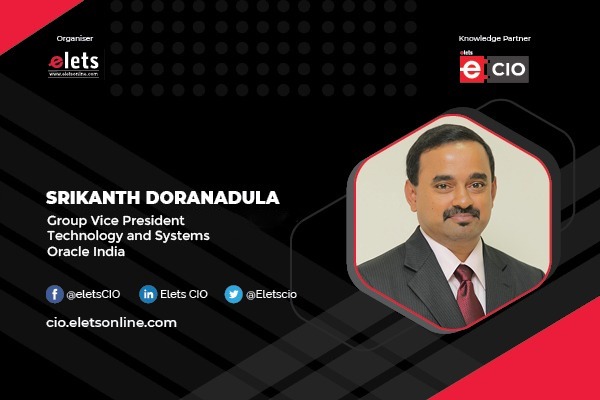
India is a unique market with a diverse demographic composition that displays varied needs and aspirations. With the growing number of internet users in Tier 3 and beyond cities, and majority of them also being mobile-first users, the lines are blurring between the aspirations of rural and urban consumers. This has presented an opportunity for the ecosystem to understand the needs of the Bharat customers and enable more inclusive e-commerce experiences for them says, Utkarsh B, Chief Architect at Flipkart to Elets News Network (ENN).
1. Technology is currently the driving factor behind every industry. What kind of approach the E-commerce companies should take for rebooting the industry through technology?
As India progresses on its digitalization journey, e-commerce has been at the forefront of driving digital adoption through local innovation and technology development, making commerce seamless. We fundamentally believe that technology and emerging technology trends can not only keep unlocking new business potential but also ensure seamless delivery of value to the end consumers. As a homegrown e-commerce marketplace, Flipkart is committed to bringing the next 500 million customers online by investing in technological solutions to bring products and services in an affordable and relatable manner to the customers’ doorstep. Over the past several years, we have invested heavily in ensuring seamless onboarding of customers, especially from beyond metros, on our platform, to meet their fundamental as well as evolving requirements.
Since India is a heterogeneous market, we cannot adopt a one-size-fits-all approach. While the first 100 million e-commerce customers came from metros and top cities where there’s a greater level of awareness and comfort with new forms of commerce and technology, the next 200-500 million customers will come from smaller cities who have completely different problem statements. Therefore, this requires a differentiated approach of on-platform experience for new-to-ecommerce customers from smaller cities. We are deeply invested in understanding the needs of our customers and thereby enabling a personalized and meaningful journey for new and existing users. In this endeavor, additionally, AI and data sciences play a key role in facilitating personalized discovery for the diverse set of users and their needs. From offering local language and voice support to building a light mobile app which can operate even at low bandwidths, Flipkart is deploying numerous capabilities to ensure a seamless onboarding experience of millions of customers from smaller cities.
2. In terms of architecture strategy, what level of difficulties and possibilities have you seen recently?
India is a unique market with a diverse demographic composition that displays varied needs and aspirations. With the growing number of internet users in Tier 3 and beyond cities, and majority of them also being mobile-first users, the lines are blurring between the aspirations of rural and urban consumers. This has presented an opportunity for the ecosystem to understand the needs of the Bharat customers and enable more inclusive e-commerce experiences for them.
The fundamental trait that a dynamic organization needs to demonstrate is dynamism and agility – and this applies to architectures too. We continuously are invested in keeping our architectures morphable and adaptive at low cost of churn. This helps us experiment and innovate faster.
Also Read | In the New Normal, a Secure and Accessible Enterprise IT Infrastructure Ensures Business Continuity
Solving regional language access is the first step to enable a native experience for a wider section of customers. We introduced regional language interfaces on Flipkart to enable vernacular users to interact with the platform in their own language in a colloquial manner and thereby, encourage independence in purchase decisions. Today customers can use the Flipkart app in 11 languages – Hindi, Tamil, Telugu, Kannada, Malayalam, Gujarati, Marathi, Bengali, Oriya, Assamese and Punjabi. We also introduced Voice Search to enable customers to discover and buy products using voice commands in Hindi and English and a blend of both. We leverage a judicious mix of translation and transliteration of over 5.4 million words on the platform to bring a natural language experience. This includes transliteration of terms such as EMI, delivery, filter, cart and OTP instead of simply translating them to enable better resonance with the native experience, helping users get acquainted with e-commerce terminologies.
Customers are now also seeking more elevated experiences, and this includes seamless product discovery, virtual trials and more. To enable millions of new shoppers to leap from ‘imagining’ to ‘experiencing’ what a product may look like in reality before making a purchase decision, we introduced Flipkart Camera, an Augmented Reality capability on the Flipkart App. In categories such as beauty, furniture, luggage and large appliances, where customers need to estimate the size and fit of the product and understand its aesthetics before making a purchase decision, customers can have a visual, 3D experience of products using Flipkart Camera. To augment this experience, we partnered with Snap Inc in October 2021 to expand our augmented reality-led e-commerce experience for millions of our customers across the country by integrating Snapchat’s Camera Kit into Flipkart’s app.
3. Is data the driving force behind transformational reforms, or is it the customer who has the upper hand?
At Flipkart all our efforts are driven by customer needs. We have invested deeply in understanding the customer intent to enhance their journey on the platform. Our efforts in making the consumers’ journey inclusive – especially considering the diversity in audience profiles, be it varying income levels, lifestyle, understanding of technology etc., have been possible due to years of experience in serving Indian customers. With the help of AI-driven personalization, we can tailor-make the experience for each user on the platform by making contextually relevant content available to consumers, thereby reducing product discovery time and faster process journey.
As the customer cohort is increasingly becoming heterogenous with millions coming from smaller cities, enabling a personalized discovery for customers for a diverse set of products is going to be key to ensure a delightful experience. In this endeavor, we have developed various capabilities to offer a greater level of personalization which is more humane. We have worked extensively towards personalization over the years and are now able to apply it throughout the funnel including personalization at multiple touch points, whether it is the homepage, product page recommendations and customer service experience.
For example, we can identify customers as premium or value customers from their search patterns and create a persona which will enable us to showcase relevant products keeping in mind the price points that cater to their needs. With the help of Geopersonalisation, a customer searching for sarees from Chennai might see Kanjeevaram in its search results while someone operating out of Rajasthan might see a different result for the same query. This design optimization is a result of data-driven insight and deep learning. We continue to learn from our users’ behavior to optimize their journey for efficiency and delight.
So, in essence, the customer always has the upper hand in bringing about transformational reforms – and the nuanced understanding of customers’ needs helps stitch together a meaningful and relatable experience.
4. What role does automation play in Flipkart’s evolution? Would you like to talk about your main achievements in this area?
To provide a consistent experience at ever increasing scale to customers across the length and breadth of a heterogeneous country such as India, businesses need to be backed by cutting-edge technology. Flipkart leverages systemization of operations in the supply chain wherein critical processes like picking of products to dispatching them from the warehouses, sortation in Mother Hubs, local runs and beat planning are all backed by technology implementations.
Also Read | The Indian market has tremendous scope : Sahil Mehta, Managing Director & Founder of Emmbros Overseas
From deploying AI-enabled automation tools such as cross belt sorters – a system that makes use of real time sensor and dynamic sorting logic and Automated Guided Vehicles – robots that segregate products according to their delivery pin codes, Flipkart has built efficiency across the supply chain system. We have also integrated tools such as RFID for product tagging and sorting, handheld devices designed to pinpoint location of products within warehouses and packing solutions that can recommend the apt packaging carton based on the product being shipped and much more. All these technologies enabled and often AI-driven tools work in tandem with the supply chain employees ensuring efficiencies, agility and scale to the supply chain operations, helping us serve the customer better.
5. The concept of Automated Guided Vehicles sounds quite progressive. What is Flipkart’s progress in this area?
The introduction of robot-based sortation technology – Automated Guided Vehicles (AGVs) in Flipkart’s Bengaluru sortation centre in 2019 is one of the many milestones in Flipkart’s supply technology interventions. Across Flipkart’s warehouse facilities, AGVs work in conjunction with the supply chain staff who are trained in operating them thereby increasing accuracy and speed. This also ensures Flipkart to upskill the existing manpower and depute them in higher value-adding work.
The AGVs have been co-developed with ecosystem partners and have been specially made to suit Flipkart’s requirements. Since its introduction, the AGVs have been working in tandem with employees to process thousands of packages in a shorter span of time, thereby building efficiencies. Today the number of AGVs have grown from 100 to 450 and have been deployed in Flipkart warehouses across the country.
6. Tell us about your growth plans for 2022
While we continue to leverage data science in shaping the Flipkart user journey and transforming merchandising itself, a combination of tech innovations including natural language processing, machine learning, automation and artificial intelligence is also solving for onboarding Bharat customers and connecting India’s remotest places with seamless delivery. The future is in offering customers a truly personalised shopping experience in the entire value chain, from search to after-sales support. Part of this is innovating in the voice and vernacular spaces, allowing online shoppers to interact with the platform in their own language and enabling voice commands across languages. These innovations will take e-commerce deeper to more customers. In 2022 will continue to leverage technological interventions to make e-commerce more inclusive and accessible for Indian consumers.
Be a part of Elets Collaborative Initiatives. Join Us for Upcoming Events and explore business opportunities. Like us on Facebook , connect with us on LinkedIn and follow us on Twitter.
"Exciting news! Elets technomedia is now on WhatsApp Channels Subscribe today by clicking the link and stay updated with the latest insights!" Click here!











